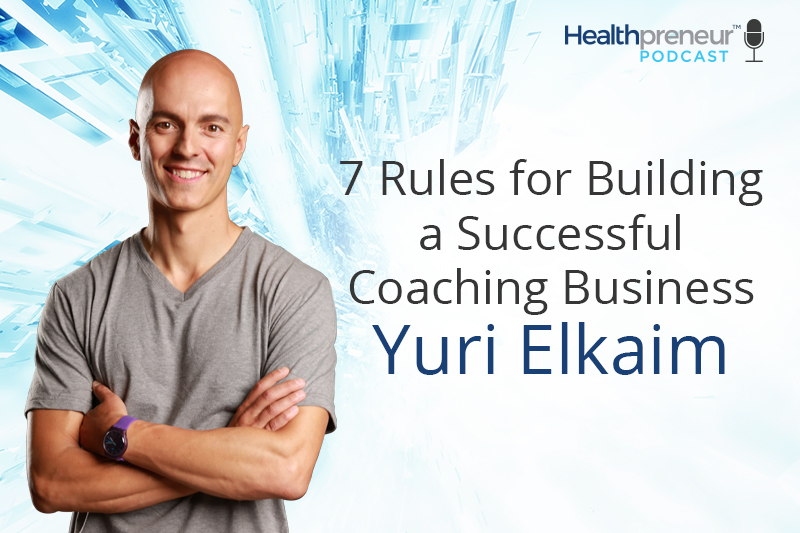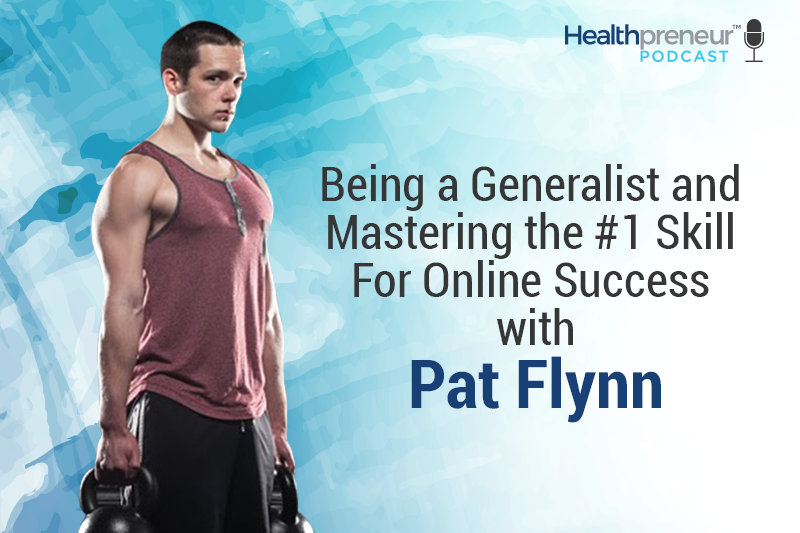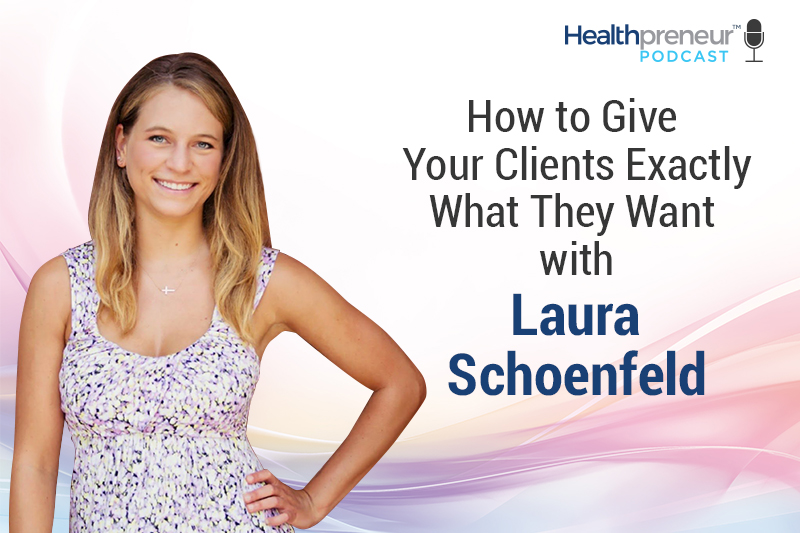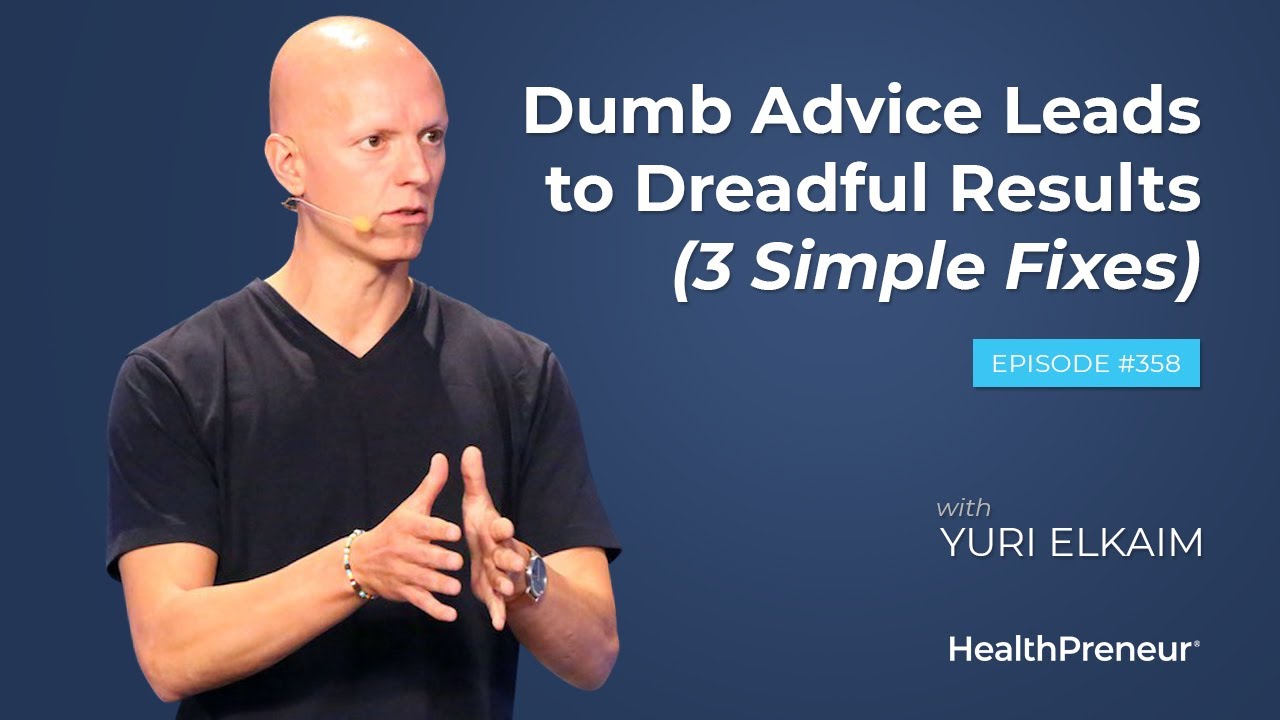Top 10 Ways to Sell Your Info Product

If you sell products online, chances are you’re well aware that it’s much harder than selling them in person.
That’s because online, you are faced with several extra barriers that stop people from buying. It’s just human nature.
In this post, I’m going to show you 10 key strategies you can use to overcome those barriers so you can successfully sell your info product.
These powerful tips are going to make a huge impact on your business, and I’ve put them in order of how important they are – and also in descending order when it comes to the prices you can command for your product.
But first, let’s look at…
The #1 Barrier to Online Sales
Let’s talk about the the biggest hurdle you’re going to have to cross when it comes to selling your info product (or physical product for that matter).
We humans are naturally risk-averse (especially online).
We want to avoid being duped.
And we really don’t want to use our credit card somewhere and then be scammed, or never receive the product we ordered, right?
You probably know what I’m talking about, and maybe it’s even happened to you before. I know it’s happened to me.
In fact, just recently I purchased a product from The Shopping Channel – an item designed to help with posture and back pain. But about a month passed and I never received the item, so of course I was wondering where it was.
When I called their customer service number, they told me they canceled my order right after I placed it, because they don’t deliver to Canada.
Now, on the website, it would have been great if they said something about not delivering to Canada, but I didn’t know this, and there I was, waiting for a month when it was supposed to be delivered in about 10 to 14 days.
Not that I was scammed or duped, but these are the types of things that we have to keep in mind as we do business online.
We need to reassure people that they’re in the right place, and that we can be trusted, and that they’ll get results from our products.
And the best way to do that is by…
Bridging the Gap by Building Your “KLT Score”

KLT stands for “know”, “like”, and “trust”.
Few people will give you their business until they know, like, and trust you.
Naturally, the best way to bridge this gap is with value-adding content, not endless sales pitches and promotions.
That’s why building a business takes time. The buying cycle can be pretty long for many people, especially considering these types of stats according to this research:
- 81% of shoppers conduct online research before they make a purchase…
- 68% begin by using a search engine to find the products they want, and…
- 61% will read product reviews before making any purchase.
That being said, the tips I’m going to outline will also apply to physical goods. So if you’ve got supplements, like me, or any kind of physical equipment, the same suggestions will apply.
So let’s dive in…
Top 10 Ways to Sell Your Info Product
1. Sell in Person
The number one way to sell is actually in person – whether you’re selling a course, workout program, diet, or something else.
If you’re talking one-on-one with somebody, you’re more able to articulate what the product is and how it can help them, while building a face-to-face relationship. That makes it a more effective way to get a conversion, because now there’s a higher level of intimacy, personal attention, and trust.
Online, your potential customer likely has no idea who you are. For all they know, you could be a fictitious character who has created a sales page. They don’t know whether they should trust you.
But when you’re one-on-one, you can establish a level of trust. You can also command higher prices when you’re actually speaking with people in person.
For example, say you’re trying to sell a $20,000 mastermind. Good luck doing that from a webpage. But if you’re speaking one-on-one with somebody, and you’ve built some rapport and a relationship, you have a much easier time selling that $20,000 product.
Because no one is going to click a $20,000 “buy now” button, sight unseen.
2. Get On the Phone
Moving one step away from being in-person, either speaking on the phone or via Skype with a potential customer is very effective.
If you’re on Skype, it’s even better if you’re on video because you have that visual human interaction. Either way, this is still very effective because you can build a relationship with the other person in a more intimate manner.
Now, this tip (just as with the first one) is obviously geared towards higher-priced products. If you’re selling a $10 ebook, you’re probably not going to jump on the phone with someone. With a lower-priced item, they either get it or they don’t.
But if you’re selling premium-priced products and services, getting them on the phone can be very effective.
This is also why some companies are willing to invest in a call centre or having customer service/sales people to be on stand by for your phone call. Speaking to someone on the phone can alleviate many concerns, especially for an older demographic that is more accustomed to human interaction than digital transactions.
3. Speak From Stage
If you ever speak in front of groups, you have the power of positioning.
Think about it: you are literally standing on stage, one level above the audience, and this naturally positions you as an authority.

When I was doing trade shows almost 12 years ago (terrible idea by the way), the power of this positioning (or lack thereof) hit me smack in the face.
In all of these trade shows, I was in a booth trying to attract people to come see our offerings. I felt like one of those desperate maitre d’s flagging people down outside a restaurant. And our results were dismal.
Desperation is never attractive and it’s terrible positioning.
But when I spoke on stage at one of those shows, people began flocking to me because now I was positioned as a figurehead, the authority on a specific topic. They were more apt to want to ask me questions or for advice after seeing me onstage, versus simply being some random dude in a booth trying to sell stuff.
As you can see, positioning is massively important, and that’s why speaking on stage can be powerful when it comes to selling. There’s a whole business model around selling from stage and there’s a reason for that. You can command very high prices when you’re speaking from that type of platform.
If you love speaking and have a solid offer, consider getting in front of bigger audiences that would fit your ideal avatar.
4. Host a Webinar
As we continue to move away from the human-to-human interaction, we move a little bit lower down the ladder in terms of pricing.
That being said, at this level of hosting a webinar we can still relatively well priced with our products, with a price range of a couple hundred to a few thousand dollars.
Hosting a webinar is terrific if you’re like me and you love teaching. It’s a great platform that allows you to provide amazing value and content before you transition to your product offer.

Here’s an example of one of our webinar registration pages (using EverWebinar).
With webinars, people commit in two ways. They commit with their money and with their time.
When somebody registers, they are saying, ”Yes, I’m going to attend this webinar at 8 p.m. tomorrow.” They’ve literally blocked that off in their calendar, committing to it.
That level of commitment is powerful – don’t underestimate it.
That’s why webinars are so successful when it comes to helping you sell your info product. People invest their time to be there with you, which makes them more willing to invest a higher dollar amount.
And here’s another cool by-product…
When you host a webinar that actually helps people (even if people don’t buy) they’re more likely to love and share your promotion of it. Because, at least they learned something on the webinar (assuming it wasn’t a full on sales pitch).
Thus, if you’re running Facebook ads to your webinar, your ads will likely do much better because of the likes and shares they receive.
5. Do a Product Launch
With a traditional product launch, people opt in for a series of 3 content videos that add value. Then, the 4th and final video is usually a webinar or sales video where offer is presented.

This is the basic setup for a traditional PLF-style launch.
This is a great way to sell, because it’s all about giving goodwill in advance of asking for anything in return.
You’re not asking outright: “Hey, buy this.”
Instead, you’re giving, giving, giving, giving, and then you’re asking for the sale in return.
It’s a very effective way to just approach life in general, right?
This is the method outlined in Jeff Walker’s “Product Launch Formula“, but whether you follow it or some variation of your own, you can still command some pretty high prices.
Most product launches now feature products that sell for about $2,000. The launch approach is more apt to be successful than simply selling something for $2,000 from a sales page on your website.
Why?
It’s all about KLT…and some other factors that obviously increase your desire for the product.
6. Use the Teach-to-Sell Method
Over the past couple years I’ve created a proprietary system I call the “Teach-to-Sell Method” for content marketing, which I teach in my content mastery workshops.

The reason I created this framework is because…
Many people create amazing content for their websites and get tons of traffic, but they have no idea how to monetize that traffic.
We’ve been able to crack the monetization code in a way that helps people produce amazing content, which leads readers and viewers through an intelligent back-end funnel that eventually turns them into customers.
I’m not going to go through the whole framework here but I will say that if you’re writing a blog post, at the very minimum you should have a lead magnet or some type of free offer that is congruent with that content.
It could be a free report, recipe guide, workout, or you can even create a quiz that leads readers to the next logical step.
If you have a blog post about kettlebell workouts, then it would make sense to offer them something related to kettlebell workouts, right? Perhaps a quick follow-along workout, as an example.
A high-converting lead magnet is:
- Simple…
- Result-focused and quick to consume/use…
- Something highly desirable…
- Congruent with the content to which it’s associated.
Naturally, your readers opt in to receive the free gift. Thus, they give you their email and you give them the FREE lead magnet.
This is how you build your email list and segment leads into “funnels” that are specific to that initial interest (ie. kettlebell workouts). Doing so, allows you to follow-up with these leads in a way that is more tailored to that specific interest, which can lead to higher conversions if you present relevant offers to them.
That’s a really simplified explanation of how the process works, but if you’re using content strategically, it’s amazingly powerful.
It’s also very similar to what you can do with product launches because you’re giving lots of good information in advance of asking for anything.
7. Harness the Addictive Power of YouTube Videos
Now, I’m specifically addressing YouTube ads, but you can also use YouTube videos that are not ads. But I’m focusing on ads because they’re very powerful.
YouTube is a giant search engine.
When people are looking for information such as “how to overcome sugar cravings,” and your video matches that search, it’ll pop up, and have an opportunity to “wow” them.
If you offer viewers helpful content and a compelling next step (ie. go to this page for a FREE gift), you’ll see much higher conversion rates than you would from most other platforms.
Why?
Because when people watch you on video there’s a level of intimacy that can’t be duplicated with written content.
Plus, Youtube encourages “binge consumption” so that watching one video takes the viewer down the rabbit hole to end up watching several more.
I’m sure you’ve done this yourself. I know I have…
You watch one video, then an hour later you’ve watched every video on that person’s channel.
Do you think these viewers might be more inclined to know, like, and trust after doing so? Absolutely!
Here’s an example from one of our oldest Youtube funnels on type 2 diabetes.

It’s as simple as this:
- The viewer starts by watching a 16-minute video of me talking about the problem…
- I finish with a call to action inviting them to download a free gift (called Diabetes Debacle) from our landing page…
- They optin for their free gift and are presented with a special offer that they can purchase.
The results: 8.35% conversion to sales!
Good luck getting that type of conversion from an ad direct to a sales letter.
8. Deploy Targeted Facebook Ads
Facebook is very different than YouTube. It’s a social platform, not a search engine.
Facebook is about “interruption”, not “intent”.
People are not on Facebook searching for “how to overcome sugar cravings.”
But if you can place relevant content or ad in front of a targeted audience of people who are most likely to resonate with that, then you can create magic on Facebook.
In the case of sugar cravings, you could tell Facebook that you only want the following demographic to see your ad:
- Women between the ages of 40 and 55 who are interested in their health.
But remember, we don’t Facebook to “search” for solutions. We go there to escape and connect with others.
Thus, any marketing you do on Facebook must be compelling enough to distract people away from watching cat videos or random memes and focusing on what you have to offer them.
And that’s where having a fundamental understanding of copywriting and influence comes in handy because…
Your #1 objective is to get their ATTENTION!
The most effective way of doing so is through the use of an image that stands out and stops them in their tracks. Just ensure that the image is relevant to your offer – not a hot woman with a low cut top.
Facebook is an amazing platform, especially if you know the demographic of people you want to be in front of. Facebook allows you to target customers on some very specific interest options, which makes it powerful and something not to be dismissed.
But again, it’s all the down the list here because your conversions to sales will be much lower than any of the previous avenues we’ve explored.
The best way to use Facebook ads (in my opinion) is to build a following with great native content (FB posts, FB live, etc…), then send them to an article on your blog that is tied in with a congruent lead magnet (to get them on your email list), and build a relationship with them over time to the point where they’re comfortable doing business with you.
Here’s an example of one our more popular ads (notice the number of shares. Almost 2x more shares than likes – something very rare when running ads)…

9. Work With Joint Ventures and Affiliates
I put this one low on the list because relying on joint ventures and affiliate to sell your products is not a business. It’s a promotion. It’s a fast, yet lazy, way of making money online.
I’m not saying don’t do it. Just use it with caution.
It’s very easy for you to ask someone to promote your products, assuming that they convert well, make them money, and are a good fit for their audience. However…
Relying on joint ventures and affiliates is a very slippery slope because you’re not building a business where you are in control of acquiring your own customers.
Instead, you’re relying on other people to provide the customers and traffic for you, and that can become pretty dangerous.
Why?
Because they can stop sending traffic to you and your revenue stops almost overnight.
And, in many cases, they’ll ask for you to “reciprocate” by sending their offer to your list, which may or may not be a good fit or convert well at all.
I recommend only doing joint ventures with people you personally know, like, and trust. That way you (and your JV partner) can wholeheartedly promote each other in an honest manner that will yield better results for everyone.
10. Set Up a Facebook Group
I’m specifically suggesting that you setup your own Facebook group here, not someone else’s.
You should never go into somebody else’s Facebook group and start promoting your products. That’s spam, and it will get you banned, fast.
Having your own Facebook group provides a terrific platform where you can interact with your audience more frequently and in a way that is a little more interested than sending emails.
Plus, in a group, each member actually sees your posts, which makes it more powerful than a Facebook fan page, where fewer than 10 percent of your fans will actually see your posts.
This means that almost everyone sees your posts and gives them a simple way to engage with you. They can ask questions, you can answer them, and then when you do have the occasional offer, they are more to likely to respond to it.
But if you don’t enjoy spending time on social media, then don’t bother with a Facebook group. But if you love interacting with your audience then it could be a good fit for your business.
Here’s What To Do Next…
So there you have it…
10 proven ways to sell more of your products (and services) in descending order from most effective (and most suitable for high-ticket sales) to slightly less effective (and better suited for less expensive products).
If you’ve enjoyed this article and want to make your marketing even more effective so you can generate more leads, customers, and revenue, then be sure to take my “Million Dollar Marketing” mini-course by clicking the banner below…
Related posts
September 7, 2018
7 Rules for Building a Successful Coaching Business
Welcome to another Healthpreneur…
November 17, 2017
Being a Generalist and Mastering the #1 Skill For Online Success with Pat Flynn
Today, we have the one-and-only…
June 20, 2018
How to Give Your Clients Exactly What They Want with Laura Schoenfeld
Welcome back to another awesome…



